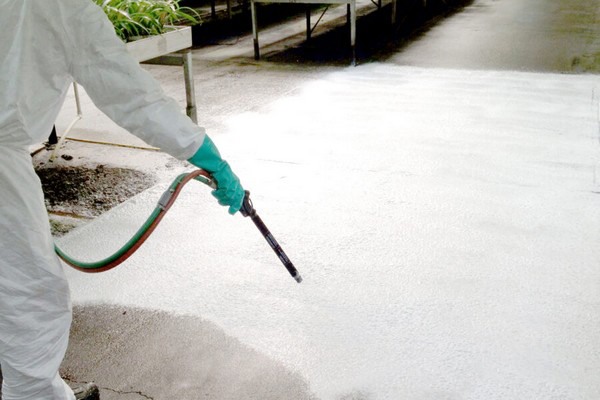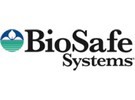There are two phases to prevent infections from plant pathogens in the greenhouse and nursery during and after production: the preventative phase and the maintenance phase. Both phases aim to avert plant pathogens from establishing, says Vijay K. Choppakatla, Ph.D., Director of Research & Development at BioSafe Systems LLC.
The preventative phase consists of a complete reset after production and is the most important of the two phases, Dr. Choppakatla adds, stressing that it can help reduce threat of pathogen inoculum sources for the next crop. A reset includes cleaning (physical and chemical) followed by sanitation. A pre-cleaning step helps improve the efficiency of sanitizer. Physical cleaning involves removal of all weeds, plant residue, debris, and growing media from the previous crop and a subsequent chemical cleaning and sanitation to prepare the greenhouse and nursery for the next growing segment.
During the chemical cleaning, Dr. Choppakatla says an alkaline cleaner like BioSafe Systems' GreenClean® Alkaline Cleaner helps remove organic deposits and helps emulsify grease and oils on concrete or the ground cloth of the gravel. Follow with an acid cleaner such as GreenClean Acid Cleaner to help lift away any inorganic deposits and clean surfaces contaminated with calcium, rust, and bicarbonate deposits, Dr. Choppakatla adds.
Eric Smith, BioSafe Systems' National Horticultural Sales Manager, says growers should also consider shocking irrigation lines between crops during the preventative phase. He suggests filling the lines with GreenClean Acid Cleaner for two or three hours to remove mineralization, flushing thoroughly, and then injecting BioSafe Systems' SaniDate® 5.0 sanitizer and disinfectant to remove any biofilm.
The Master Cleaning Schedule
The second phase to prevent plant pathogen infections is maintenance and it's dictated by a master cleaning schedule, Smith says. The schedule is detailed and lengthy, containing monthly and weekly duties involving all aspects of the greenhouse including floors, water recollection silos, irrigation systems, tools, bins, and carts. "Everything would have a slot on the schedule," Smith says.
The purpose of scheduled maintenance and sanitation practices is to make a production period more effective and economical by decreasing pathogen numbers and propagules that cause disease, thereby reducing the need for chemical controls.
The critical points of control vary by greenhouse and are in accordance with the type of operation and what's being grown and the facility's layout, including entry and exit points, Smith says. "There is no one-size-fits-all master cleaning schedule," he adds.
Dr. Choppakatla stresses the importance of keeping any pruning tools clean during the maintenance phase. "Pruning is one of the most common ways that viruses can spread from plant to plant," he adds. "If you prune an infected plant and use the same tool to prune another plant, that's the source of transfer of the virus. It's recommended to dip pruning/cutting tools into disinfectant solutions that were approved for use and proven to be effective for controlling plant viruses."

Water treatments are also vital during the maintenance phase to sanitize the water used for irrigation to grow crops, especially if growers are using surface or recycled water, Dr. Choppakatla says. "Maintaining an effective level of sanitizer in the water will help prevent cross contamination and spread of plant pathogens," he adds.
Smith points out that even if growers are irrigating with municipal water, they should consider sanitizing it, especially if their operations include large water-holding tanks or silos up to 100,000 gallons, which can add surface area for pathogen, algae, and biofilm development.
"The inside of the irrigation system is often overlooked, but it's one of the most important to treat because all that surface area of pipes, tanks, pumps, and valves needs to be treated and considered in the master cleaning schedule," Smith says.
Dr. Choppakatla also suggests greenhouses implement foot baths that contain a disinfectant solution during the maintenance phase to keep "quarantine-type" pests from entering the production area. He says foot baths should be placed at entry points of a greenhouse.
For more information:
BioSafe Systems
biosafesystems.com
